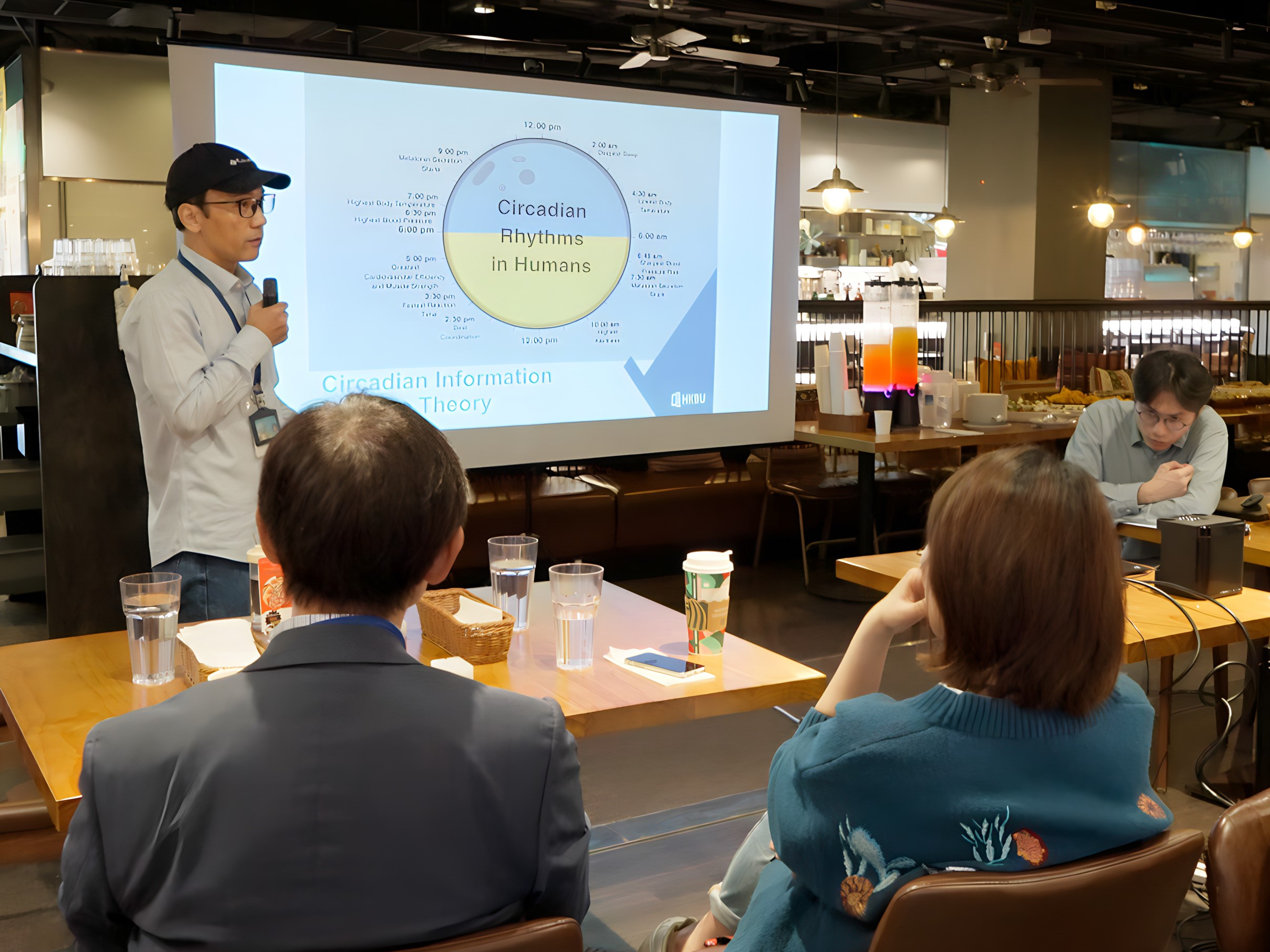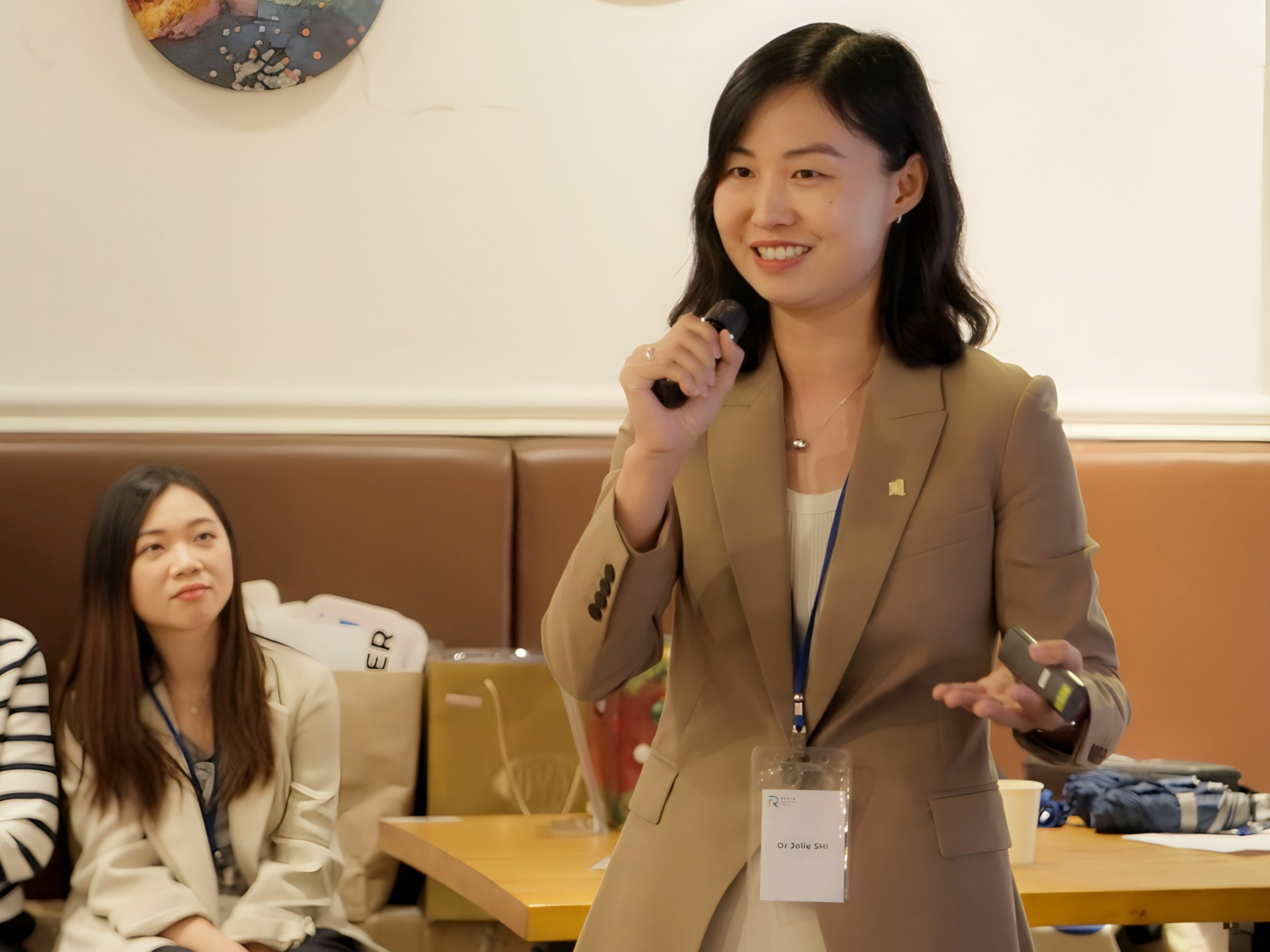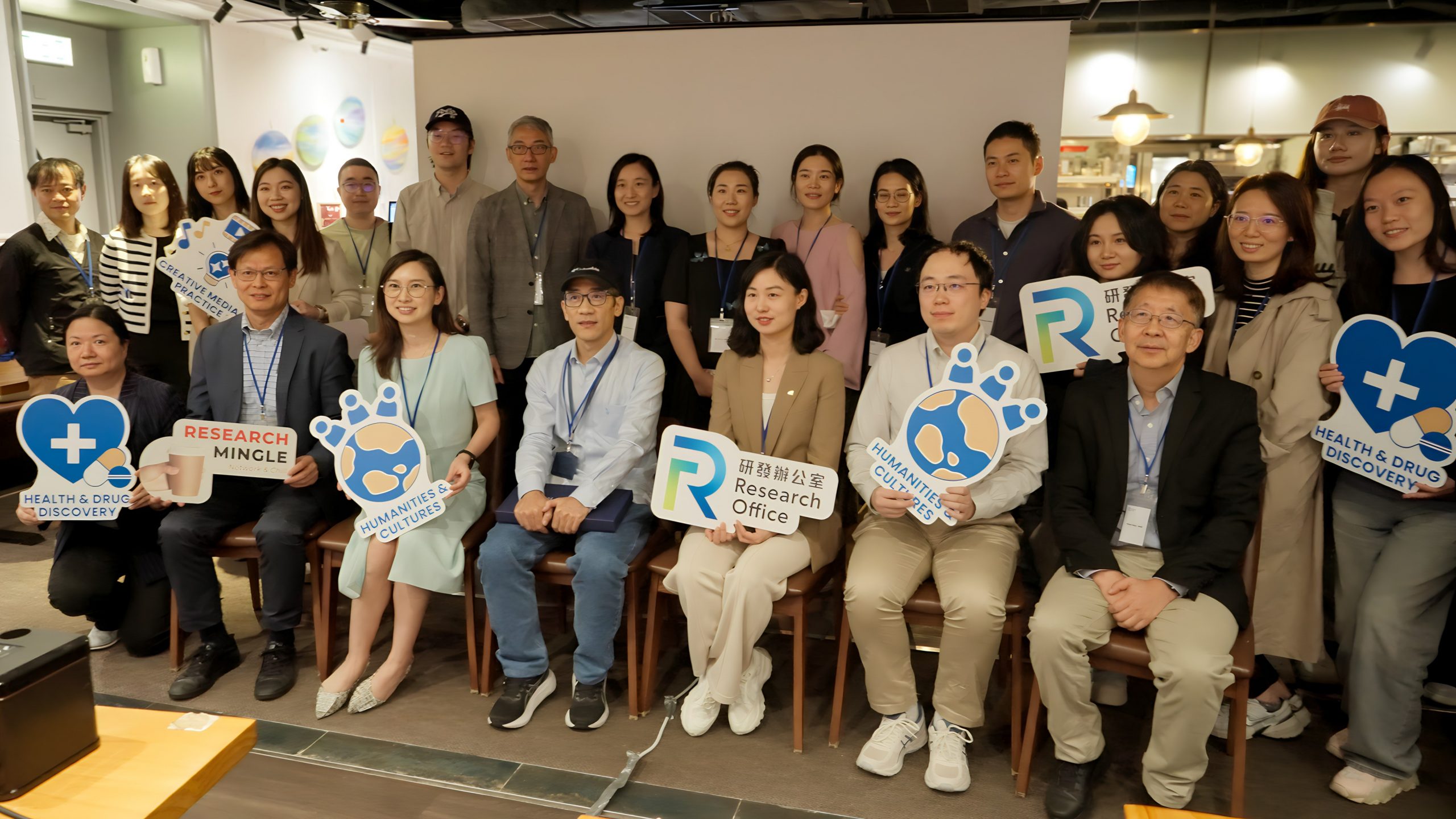Published: 2024-11-27
At a recent research event, scholars from Hong Kong Baptist University’s School of Communication and School of Business presented groundbreaking projects addressing the use of large data sets for social good, combating misinformation, and leveraging new technologies for improved communication. Associate Professors in the Department of Interactive Media, Charles Feng and Jolie Shi, along with scholars from the School of Business, Shirley Li and Wenqian Wang, showcased their innovative research at the Research Mingle organized by the University’s Research Office in November 2024.
Leveraging Information Technologies to combat Sleep Disorders
Various kinds of false and misleading information abound on digital media spaces, and they pose great danger to society, but one that has very lethal immediate consequences is health misinformation. Inaccurate and fake health information creates confusion and prevents people from getting the appropriate medical attention they need. Although numerous interventions have been developed to tackle health misinformation, the overall efficacy of these interventions are still not ascertained.
 |
Charles Feng giving his talk at the research mingle |
Charles Feng’s research focuses on correcting health misinformation and fostering mindful information consumption using network meta-analysis. He studies this within the context of sleep disorders. Sleep is a vital activity that humans require to function properly. The human body has a natural system that regulates the cycle of alertness and slumber, day and night within the 24-hour period, which is termed ‘the circadian rhythm’ or the ‘internal biological clock’. However, a disruption of the circadian rhythm results in sleep deficiency which can trigger chronic health problems like high blood pressure, stroke, and mental health challenges like depression and anxiety.
During his talk, Feng explained that one of the ways the circadian rhythm can be disrupted is if a person is exposed to more stimulating or stress-arousing information in the evening when the body is ready for rest rather than in the morning when the body is alert. He argues that excessive innovative information exposure, especially before bedtime, elevates the dopamine and epinephrine levels, which hinders sleep. Thus, Feng proposed a new framework, the Circadian Information Balance Theory (CIBT), which posits that the timing, type, and the volume of information intake should align with the body’s natural circadian rhythm to support optimal cognitive and emotional health.
The implication of applying CIBT to sleep disorders is that it allows for a balanced information exposure which helps to improve sleep deprivation, maintain mental clarity, and emotional stability. “By incorporating practices like information breaks, mindful consumption, and distinguishing between cognitive nutrients and junks, the CIBT offers a framework for navigating the age of information explosion”, Feng remarks.
Integrating Explainable AI and Communication Research
The rapid advancement of artificial intelligence has made it increasingly important for people to understand how AI systems make decisions and produce results. This effort to make AI processes clearer and more transparent is known as Explainable AI (XAI). By helping users understand how AI works, XAI aims to build trust and improve the overall experience of using AI-powered systems. Jolie Shi research focuses on connecting XAI with communication studies to create a better understanding of how humans interact with AI. Her presentation titled ‘From Black Box to Glass Box: Initiating Conversations between Explainable AI and Communication Research’, highlights six key areas where XAI and communication research can work together. She also introduces a two-level framework for understanding human-machine communication.
 |
Jolie Shi giving her talk at the research mingle |
“In the future of communication research, we need to look at the unique characteristics of AI and explore how people can engage not just with AI systems themselves but also with explanations about how those systems work,” Shi explained.
One of the six integration areas Shi discusses is the “human-in-the-loop” approach. This concept emphasizes the role humans play in designing, refining, and verifying AI systems. According to Shi, studying how users perceive human involvement in AI systems will be critical for improving human-AI interactions. Shi also highlights the importance of studying the sources of explanations. Communication research has long examined how the credibility and nature of a source affect trust and understanding. Applying this knowledge to XAI could reveal how different types of explanation sources impact users’ trust and acceptance of AI systems.
Shi urges researchers to go beyond focusing solely on users’ interactions with AI interfaces. She suggests exploring how users evaluate explanations of AI processes and how these insights influence their trust, attitudes, and willingness to use AI technology.
 |
Speakers and guests at the research mingle |
These research projects showcase the potential of communication research in driving positive change and addressing various technological, social, and health issues. The studies further highlight the need to develop ethical solutions to that will not only ensure effective human-machine interaction, but also foster a balances utilization of technology by users.